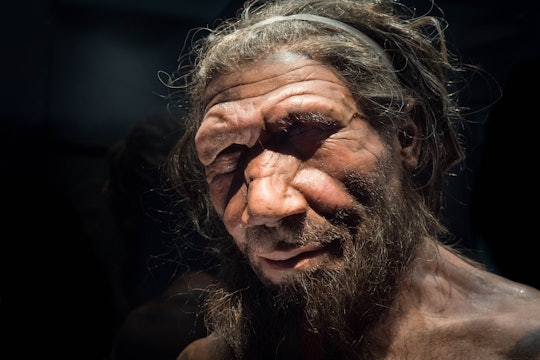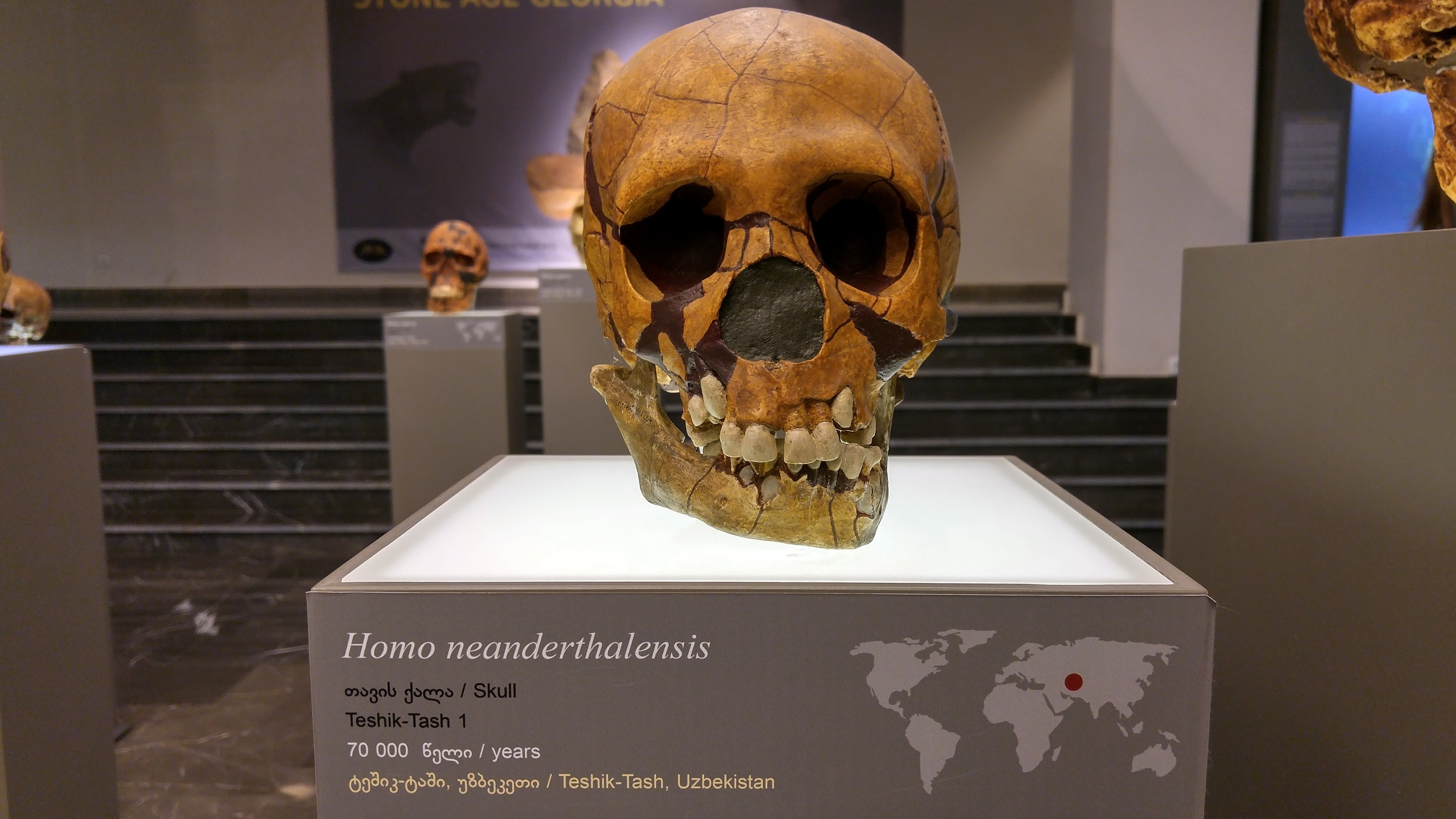
Neandertals don't deserve their bad, dim-witted reputation
Our hominin ancestor had bigger brains and probably went extinct with climate change. Who are we to judge?
On March 3, 2021, the governors of Texas and Mississippi announced that they were lifting their respective mask mandates, prompting criticism from President Biden, who called the move "Neanderthal thinking." Biden was implying that lifting the mandates was a primitive act — but this understanding of Neandertals is an outdated stereotype, unsupported by modern research.
Neandertals (Homo neanderthalensis) are an extinct species of hominin — the taxonomic name for a tribe that includes living and extinct humans and their ancestors. They lived throughout Eurasia up until about 40,000 years ago. One of the earliest Neandertal fossils was discovered in the Neander Valley in Germany, which is where the species gets its name. Interestingly, the contemporary word for “valley” in German is “tal,” so anthropologists tend to call the species “Neandertal,” not Neanderthal (dropping the 'h').
Contemporary research suggests that Neandertals were sophisticated tool users who used fire and built hearths, crafted clothes and jewelry, used medicinal plants to treat their ailments, buried their dead, and made art. The fact that Neandertals made art is particularly noteworthy, as this has long been thought of as a defining human behavior — something that modern Homo sapiens do, but other species do not. Yet, some of the oldest cave art, found in modern-day Spain and dated to about 65,000 years ago, was actually produced by Neandertals. Those drawings depict ladder-like shapes, as well as animals. The discovery supports the argument that this species had a sophisticated culture. If, as research suggests, Neandertals behaved similarly to humans, we either need to rethink our definition of human, or update our definition of Neandertal.
Where did the brutish stereotype that plagues Neandertals originate? This association can be traced back to 1911, when French paleontologist Marcellin Boule described a newly discovered Neandertal fossil from the La Chapelle-aux-Saints site in France. Boule wrote that the fossil had primitive characteristics, including a hunched posture, big, divergent toes, and large brow ridges which, he argued, signaled a lack of intelligence.
In the 1950s, this fossil, nicknamed the "Old Man of La Chappelle," was reexamined and found to have osteoarthritis, which would account for his slouching posture. The larger brow ridge fell within the normal range of human variation. And, in 1985, paleoanthropologist Erik Trinkaus examined the fossil for a third time, and found evidence for degenerative joint disease. He accused Boule of misassembling the skeleton based on his perceived notions of what human ancestors should look like. Unlike Boule, Trinkaus found no evidence for a divergent big toe, a trait commonly found in our closest living ape ancestors, and regarded as relatively primitive.
Boule's original interpretation of Neandertals was based on an incorrect reconstruction of their skeletons. The wider build and shorter limbs common in Neandertal skeletons has also been seen as primitive compared to early humans, though researchers now argue these were adaptations to a colder climate. Their brains were bigger than those of modern humans, and shaped differently, suggesting they may have had distinct cognitive patterns. But new research on Neandertal anatomy and physiology from March 2021 suggests that they likely had similar hearing and speech capacities to modern humans. (Plus, an immune adaptation that they passed on to humans helps protect against severe COVID-19 infection.) There are certainly anatomical differences between humans and Neandertals, but their anatomy is not primitive enough to support these long-standing stereotypes.

Neandertal skull
Photo by mostafa meraji on Unsplash
It's clear that incorrect early reports shaped assumptions about the behavioral and anatomical nature of Neandertals. Marcellin Boule was a follower of Georges Cuvier, who promoted the theory of catastrophism, or the idea that one species had to endure catastrophe and go extinct for another to evolve (Cuvier was also an advocate of scientific racism). Boule used this idea to suggest a Neandertal catastrophe, arguing that they must have gone extinct because humans were better tool makers and more culturally sophisticated, making them generally better survivors. This eventually led to the idea of “humans versus Neandertals,” where humans thought they were inherently superior to Neandertals. (In reality, however, Neandertals likely went extinct due to climate change).
Despite research in the late twentieth century that says otherwise, the general public still understands Neandertals as a relatively primitive species. The idea that Neandertals were a primeval species was picked up by popular media in a 1911 sci-fi novella, which eventually turned into the 1981 film the Quest for Fire. The 1953 The Neanderthal Man comic book movie series, Jean M. Auel’s Earth’s Children series from the 1980s, and the 2013 animated series The Croods also all promote the stereotype portraying Neandertals as brutish characters.
As President Biden’s recent remarks demonstrate, there remains a disconnect between the actual science and public perception. Dinosaurs once faced a similar issue: throughout the first half of the twentieth century, the general public believed dinosaurs were sluggish and cold-blooded. It wasn't until the 1960s that a small scientific revolution, sparked by new discoveries and led by paleontologist John Ostrom, suggested that dinosaurs were probably active, warm-blooded animals. This came to be known as the "dinosaur renaissance," and led to a profound shift in public thinking on nearly every aspect of dinosaur biology. Some argue that movies like Jurassic Park adapted this view, and helped to promote a more active, evolved dinosaur, permanently shifting the dinosaur narrative. It worked — many of us born after the 1970s may not remember a time when dinosaurs were seen as slow and sluggish.
Perhaps the Neandertals need their own revolution — a Neandertal rebirth, if you will — to help the general and scientific community understand that they were a sophisticated, cultured species who made art, had some similar anatomical features to humans, and who went extinct due to a changing climate, not inferiority.





This is a great article, Brittany, very well done. I really appreciated all the relevant history you’ve included, not only the anthropological, but also the etymology! It is disappointing, although not altogether surprising to me, that “large brow ridges” on the Neandertal’s skull were equated with low intelligence. This is a form of phrenology, the study of skull shape as a readout of mental ability, which is a pseudoscience that was popular around the time of Marcellin Boule. Phrenology has been used to promote racist ideologies throughout the 19th century, most notably in supporting slavery in the United States. Historically, phrenologists argued that skull shapes of enslaved people more closely resembled those of apes than those of white people, which they used as a justification for inhumane treatment. I am so happy to read that contemporary researchers have rejected this analysis, and that Neandertals are finally getting the humanization and credit they deserve.